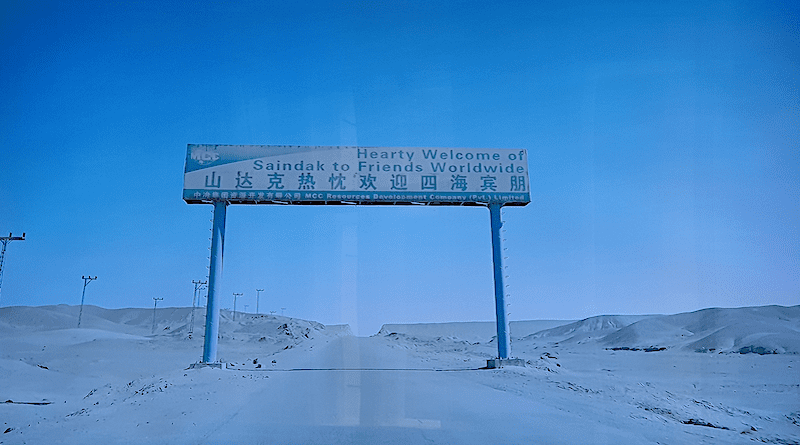Pakistan: SIFC A Lifeline For Balochistan’s Minerals Economy – OpEd
Pakistan is a land of untapped opportunities that is filled with potential and resources. One such sector that is either ignored or left in the hands of illegal trade and corrupt government officials is the mineral sector.
Pakistan is endowed with huge reserves of minerals covering an outcrop area of 600,000 sq km. There are 92 known minerals of which 52 are commercially exploited with a total production of 68.52 million metric tons per year. Despite its huge potential, contribution of mineral sector to Pakistan’s GDP is less than 1% despite its potential to contribute 3-5% and country’s exports are only about 0.1% of the world’s total. There are several impediments that act as a hindrance for complete utilization of the mineral sector in Pakistan but the most prominent ones are, missing regulatory framework, insufficient infrastructure, outdated technology, and institutional capacity.
To address all these issues the government of Pakistan in collaboration with the Pakistan Army launched Special Investment Facilitation Council (SIFC). This council has already initiated work towards betterment of different sectors including, Agriculture, Defense, IT, Minerals, and Telecommunication plus Energy. It would act as a single window interface facilitation platform for investors from around the globe. Minerals is a very important sector to reform under this flagship project of SIFC.
There are several mineral reserves in every province of Pakistan however, initial operations will be launched in Balochistan as the region is said to be full of untapped minerals with an estimated wealth in trillions of USD. Rich reserves of world’s most expensive metal molybdenum have been discovered in Balochistan. The portion of Tethyan Copper belt situated in the region has rich mineral reserves mainly copper.
The Tethyan Copper Belt, also known as the Tethyan Magmatic Arc, spans several nations. It extends through central and southeast Europe (Hungary, Romania, Bulgaria, Greece), Turkey, Iran, Pakistan and through the Himalayan region into Myanmar, Malaysia, Indonesia and Papua New Guinea. It contains a wealth of large copper and gold ore deposits, of varying grades.
Different environments have led to the formation of various types of copper deposits, including porphyry, skarn, and sediment-hosted deposits. Part of the belt lies in Pakistan, bordering western side from Chagai in Balochistan till Himalayan ranges. Mineral-rich areas like Saindak and Rekodiq are part of this belt, which have vast deposits of copper and gold. When it comes to copper, Pakistan has the fifth-largest copper deposit in the world. With 12.3 million tons of copper and 20.9 million ounces of gold in estimated and indicated reserves, Reko Diq is a substantial copper and gold deposit located in Balochistan. It has the potential to produce 200,000 tons of copper and 250,000 ounces of gold annually for more than 50 years.
From the Saindak deposits, the total amount of copper, gold, and silver that can be recovered is approximately 1.69 million tons, 2.24 million ounces, and 2.49 million ounces, respectively. In 2020 alone, Pakistan spent upwards of USD 10 million on copper imports. Exploitation of these resources will not only lessen import budget but also ameliorate revenue generation through exports.
SIFC in this regard is the key factor to boost Pakistan’s economy through utilization of minerals sector. There is enormous mining potential of minerals in Pakistan as Tythian magmatic arc (World’s largest depository of copper and Gold) passes through Western areas of Pakistan from Balochistan to up North till Himalyas.
Since these areas are sparsely populated, mining is greatly facilitated in comparison to densely populated areas. Particularly areas in Balochistan are more suitable in comparison to North due to terrain considerations. However, extensive capital (Foreign direct investment), latest technology and consistent efforts (survey and exploration) over a period of time are required to reap the dividends in minerals sector. Government and Army are working concomitantly under SIFC and have decided to devise a consistent plan to untap mineral potential of Pakistan. Reko Diq is a pertinent example in this case. Resultantly, incoming FDI and related infrastructure development projects will assist in Revenue generation, development of minerals sector, job creation and socio-economic betterment in Western areas of Pakistan.

